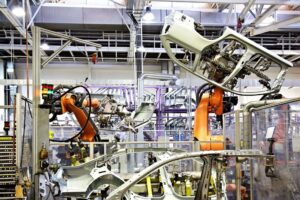Engineer-to-order manufacturers build complex, customized products that are specifically designed to meet customer requirements. In order to accomplish this on time at less cost, manufacturers have to
- Create and push quotations faster
- Build unique sets of BOMs, routings, and item numbers
- Create designs as per customer requirements
- Track and control engineering changes
- Procure high-quality materials at less cost and ensure on-time delivery
- Track and keep project costs in check
- Ensure the best after-sales service for optimum customer satisfaction
Looks easy on paper, isn’t it?
However, ETO manufacturers face a lot of challenges in their day-to-day operations right from customer proposal to delivery. Let us look at a few of these.
Time-consuming proposal & quotation
ETO manufacturers require a lot of time, and effort to create an accurate quotation and estimate for the customer. This is primarily because of the fact that the products are highly complex in nature requiring multiple sub-assemblies and parts to be designed from scratch. And no two products (of different customers) are the same. Every product is different, requiring new processes, tools, and parts most of the time. Therefore, manufacturers typically spend 6-8 months arriving at an accurate proposal that is cost-effective and profitable.
In the absence of proper quotation software, manufacturers resort to manual methods of data collection and retrieval. This leads to data duplication, human errors, loss of data, and delays in data retrieval, thereby impacting quotation numbers.
Extensive product design phase
The success of the entire project depends on the product design phase. This phase takes up the longest amount of time as it involves creating a preliminary design followed by multiple design iterations due to constant requirement changes.
Customers are deeply involved in the design process from start to finish leading to constant requirement modifications. This results in the entire team going back to the drawing board to make those changes that push the project forward. Due to these design changes, the manufacturer has to keep material procurement on hold leading to further delays.
Now, this is the case for a single customer. The manufacturer caters to multiple customers simultaneously and the prolonged design phase creates confusion and causes disruption.
Extensive collaboration with departments and vendors
Unlike conventional discrete manufacturers, ETO manufacturers have to extensively drive collaboration between departments and third-party vendors in order to meet customer requirements from design to delivery.
The concerned project team has to,
- Coordinate with the design team for the latest design iteration.
- Continuously engage with the customer for any change in requirement.
- Check with the shop floor if they have the right machines and tools to manufacture the product.
- Check with the vendors for the right parts and sub-assemblies.
- Collaborate with the accounting team for budget adjustments and cost control.
- Coordinate with logistics and shipping to ensure the right way to ship the product to the customer on time.
Manual methods of communication will drag the project for years together. Therefore, a comprehensive ERP system is necessary to automate communication and ensure an error-free environment.
Order-to-fulfillment ratio
ETO manufacturers race against time to deliver products to customers on time as committed. Their primary challenge is to reduce the order-to-fulfillment ratio leading to a reduction in overhead and operating costs. However, the process of designing, material procurement, production, and testing along with constant design changes makes it difficult for manufacturers to make on-time delivery. With paper-based tracking and in the absence of good ERP software, they find it even more difficult to get a real-time view of day-to-day operations and prevent bottlenecks that disrupt the project.
Engineering Change Management
For ETO manufacturers, Engineering Change Management (ECN) is the most critical process as they deal with constant changes from design to production. If there is a design change to a particular part or a sub-assembly or the material used, it has to be properly documented and tracked. Revisions have to be tracked for BOMs, finished products, routing changes, and revision numbers have to be tracked at every BOM level. Any change to BOM or routing has to be automatically reflected in the product cost.
In the absence of powerful ECN management software, ETO manufacturers cannot stay on top of their item, component, and material changes at any production phase. With no proper change documentation and tracking, there will be utter chaos as personnel will scramble to retrieve the latest data and update it with any changes that affect the end product.
Cost control and profitability
Every ETO manufacturer wants to control and reduce costs to improve its bottom line. However, to do this accurately and consistently is their biggest challenge. Most manufacturers do not have a proper system or use legacy accounting systems to capture costs. These systems don’t give a real-time view of their enterprise’s financial health as they are silo-based systems on legacy, outdated technology. The accounting methods are archaic and they don’t provide the means to manage complex, multi-customer, and multi-year customer projects.
In the absence of a proper costing system, manufacturers struggle to input, modify, retrieve, and analyze project costs which lead to an increase in costs and loss of profitability. ETO manufacturers need a powerful ERP that has comprehensive functionality to capture costs and turn them into valuable data using in-built data analytics and business intelligence features.
Conclusion
All of the above challenges can be easily overcome with the help of powerful ERP software. An ERP software such as OmegaCube ERP helps automate crucial manufacturing workflows and streamline business processes.
Stay tuned for our next blog which will demonstrate how ERP can solve ETO manufacturing challenges and help them stay ahead of the competition.





